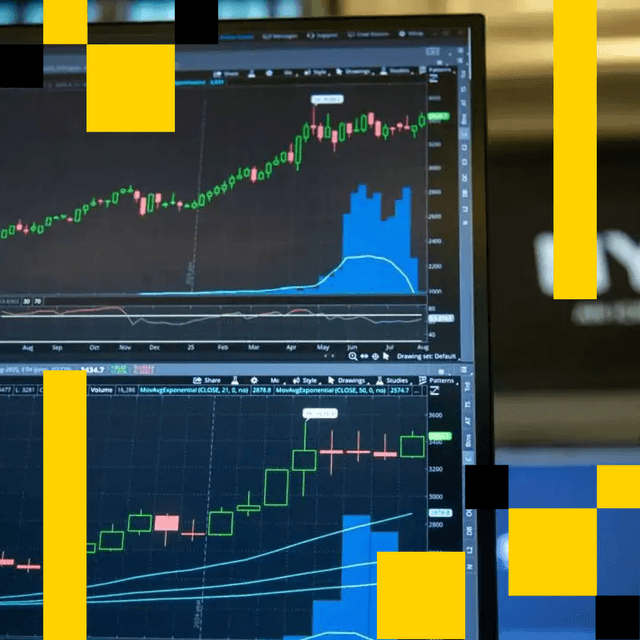Bitcoin Price and Hashrate Divergence May Set the Scene for a Potential Rally, Historical Data Shows
September's counter-seasonal price trend has already started to show signs of this divergence trend helping BTC.

- The divergence between Bitcoin's hash rate and price could signal a potential rally in prices, according to historical data.
- September's counter-seasonal price trend has already started to show signs of this divergence trend playing out.
- Publicly traded miners have increased their market share post-halving by raising their computing power and started accumulating bitcoin, potentially reducing market supply and raising a chance of upside to the price.
A divergence between bitcoin {{BTC}} price and its hashrate or network's total computing power could potentially point towards a rally in the price of the largest digital asset.
Historically, these divergences have occurred only a few times in the past three years. In some cases, bitcoin prices have reached a local bottom during these events, followed by a rally as the market catches up with the rising hash rate. Bitcoin network's hashrates rise and fall depending on how many miners have their mining computers online to validate transactions.

Consistent with this pattern, bitcoin has already shown signs of recovery, gaining about $9,000 since the local bottom on Sept. 6, representing a 15% increase in value. This divergence between bitcoin's {{BTC}} price and its hash rate started to shape up in July and then persisted into early September, when the computing power of the network reached an all-time high of 693 exahashes per second (EH/s) on a seven-day moving average, while bitcoin's price was near $54,000.

A significant factor contributing to the recent surge in hash rate is the activity of publicly traded mining companies. Before the halving - where bitcoin rewards get cut in half - the hash rate peaked at 650 EH/s and dropped to 550 EH/s in June, as less efficient miners exited the network due to higher competition. It has now returned to pre-halving levels as publicly traded miners that are well-capitalized, have increased their market share by raising their computing power.
Read more: What Is the Bitcoin Halving
In fact, data from the sixteen public companies show that they have almost reached a 23% market share in production, the highest since at least January 2023, according to the industry journal TheMinerMag. It is likely that publicly traded miners will continue to capture a larger share of the hash rate over time as they compete to stay profitable post-halving.

Counter-seasonal trend
September has historically been dubbed a bearish month for bitcoin, with historical data from Coinglass indicating an average price decline of 4%. However, this year has defied that trend, with bitcoin posting a 7% increase so far. This counter-seasonal trend could be indicating that due to the lower bitcoin price and rising hashrate, the price could be playing catch up with the hash rate, potentially setting up for another rally. Of course, there are other market factors such as interest rate decisions could also catalyze this price change.
Additionally, the next difficulty adjustment, scheduled for Sept. 25 and projected to decrease by 5%, could also indicate that prices may be catching up. Blocks are currently being mined at an average of 10.5 minutes, according to mempool.space. This indicates a potential slowdown in the hash rate as price plays catch up.

Miners accumulating
Another factor that could signal a potential rise in price is what miners are doing with their mined bitcoin.
Glassnode data indicates that from November 2023 to August 2024, miners consistently sold bitcoin to fund their operations due to the halving, marking one of the longest periods of sell pressure on record.
However, in the past 30 days, miners began accumulating bitcoin in their wallets, suggesting that the financial strain from the halving is largely over. If miners are distributing less bitcoin, this reduces the supply entering the market, increasing the chance of potentially helping the price.

Disclosure: An early draft of this article was edited by an AI tool, then further edited by CoinDesk staff prior to publication.
UPDATE (Sept. 26, 2024, 17:13 UTC): Belatedly adds disclosure.
Mais para você
Exchange Review - March 2025

CoinDesk Data's monthly Exchange Review captures the key developments within the cryptocurrency exchange market. The report includes analyses that relate to exchange volumes, crypto derivatives trading, market segmentation by fees, fiat trading, and more.
O que saber:
Trading activity softened in March as market uncertainty grew amid escalating tariff tensions between the U.S. and global trading partners. Centralized exchanges recorded their lowest combined trading volume since October, declining 6.24% to $6.79tn. This marked the third consecutive monthly decline across both market segments, with spot trading volume falling 14.1% to $1.98tn and derivatives trading slipping 2.56% to $4.81tn.
- Trading Volumes Decline for Third Consecutive Month: Combined spot and derivatives trading volume on centralized exchanges fell by 6.24% to $6.79tn in March 2025, reaching the lowest level since October. Both spot and derivatives markets recorded their third consecutive monthly decline, falling 14.1% and 2.56% to $1.98tn and $4.81tn respectively.
- Institutional Crypto Trading Volume on CME Falls 23.5%: In March, total derivatives trading volume on the CME exchange fell by 23.5% to $175bn, the lowest monthly volume since October 2024. CME's market share among derivatives exchanges dropped from 4.63% to 3.64%, suggesting declining institutional interest amid current macroeconomic conditions.
- Bybit Spot Market Share Slides in March: Spot trading volume on Bybit fell by 52.1% to $81.1bn in March, coinciding with decreased trading activity following the hack of the exchange's cold wallets in February. Bybit's spot market share dropped from 7.35% to 4.10%, its lowest since July 2023.
Більше для вас
This article is created to test tags being added to image overlays

Dek: This article is created to test tags being added to image overlays
Що варто знати:
- Ethena's USDe becomes fifth stablecoin to surpass $10 billion market cap in just 609 days, while Tether's dominance continues to slip.











